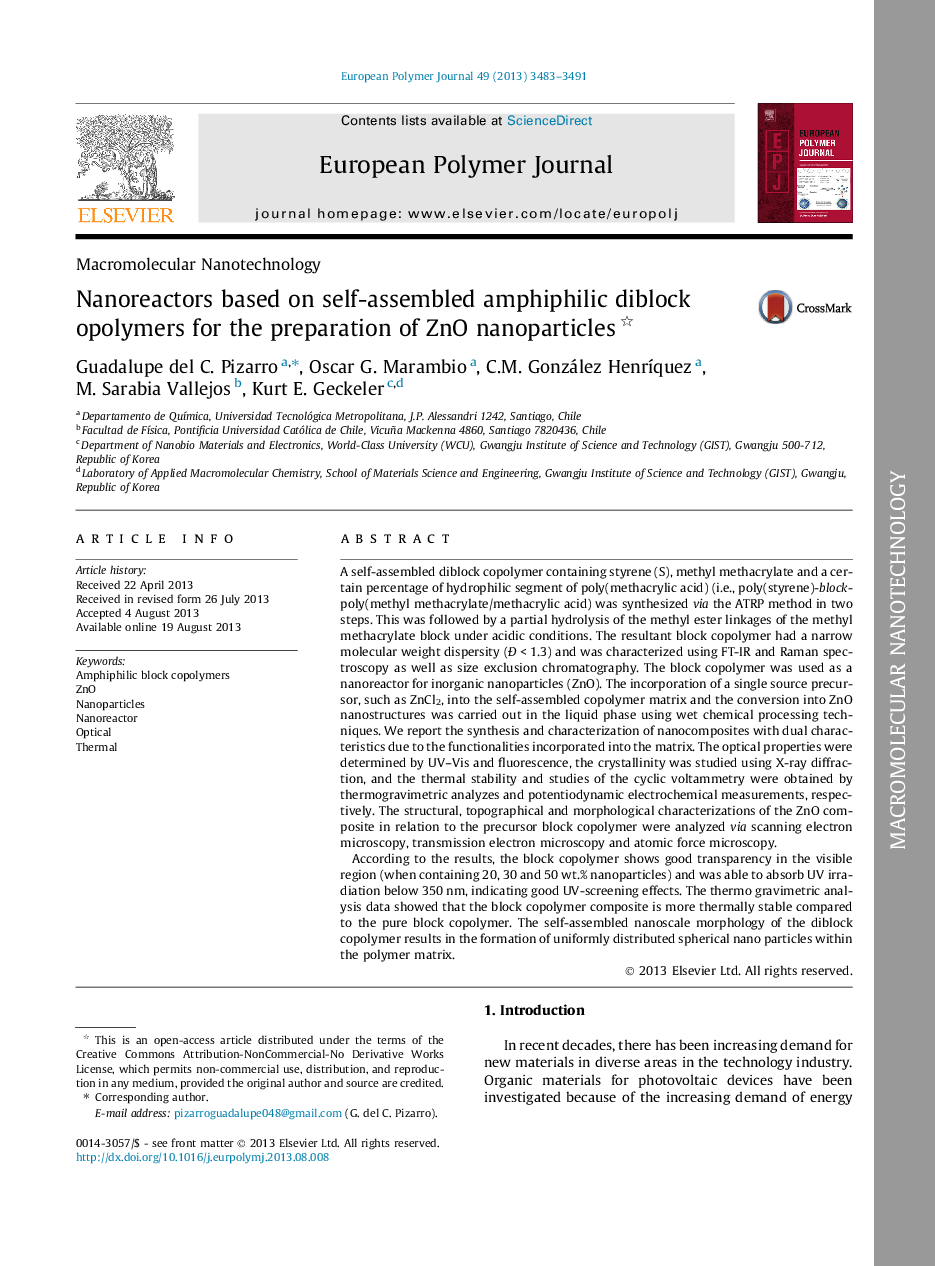| کد مقاله | کد نشریه | سال انتشار | مقاله انگلیسی | نسخه تمام متن |
|---|---|---|---|---|
| 1399612 | 984476 | 2013 | 9 صفحه PDF | دانلود رایگان |

• We synthesize via ATRP method the amphiphilic block copolymer; PS-block-PMMA/MAA.
• This block copolymer, previously mentioned, had narrow molecular weight dispersity.
• This compound was used as nanoreactor of ZnO semiconductive nanoparticles.
• Morphology of block copolymer results in the formation of spherical nanoparticles.
• These composites had interesting optical, thermal and morphological properties.
A self-assembled diblock copolymer containing styrene (S), methyl methacrylate and a certain percentage of hydrophilic segment of poly(methacrylic acid) (i.e., poly(styrene)-block-poly(methyl methacrylate/methacrylic acid) was synthesized via the ATRP method in two steps. This was followed by a partial hydrolysis of the methyl ester linkages of the methyl methacrylate block under acidic conditions. The resultant block copolymer had a narrow molecular weight dispersity (Ð < 1.3) and was characterized using FT-IR and Raman spectroscopy as well as size exclusion chromatography. The block copolymer was used as a nanoreactor for inorganic nanoparticles (ZnO). The incorporation of a single source precursor, such as ZnCl2, into the self-assembled copolymer matrix and the conversion into ZnO nanostructures was carried out in the liquid phase using wet chemical processing techniques. We report the synthesis and characterization of nanocomposites with dual characteristics due to the functionalities incorporated into the matrix. The optical properties were determined by UV–Vis and fluorescence, the crystallinity was studied using X-ray diffraction, and the thermal stability and studies of the cyclic voltammetry were obtained by thermogravimetric analyzes and potentiodynamic electrochemical measurements, respectively. The structural, topographical and morphological characterizations of the ZnO composite in relation to the precursor block copolymer were analyzed via scanning electron microscopy, transmission electron microscopy and atomic force microscopy.According to the results, the block copolymer shows good transparency in the visible region (when containing 20, 30 and 50 wt.% nanoparticles) and was able to absorb UV irradiation below 350 nm, indicating good UV-screening effects. The thermo gravimetric analysis data showed that the block copolymer composite is more thermally stable compared to the pure block copolymer. The self-assembled nanoscale morphology of the diblock copolymer results in the formation of uniformly distributed spherical nano particles within the polymer matrix.
A block copolymer was synthesized via ATRP technique, for the purpose to be used as nanoreactor. The resultant block copolymer was characterized using FT-IR and Raman spectroscopy, also size exclusion chromatography was used as characterization method. The incorporation of inorganic nanoparticles (ZnO) into the system affects the optical, thermal and morphological properties. According to this, the composites showed spherical nanoparticles within the polymer matrix, that are more stable thermodynamically compared to the block copolymer.Figure optionsDownload as PowerPoint slide
Journal: European Polymer Journal - Volume 49, Issue 11, November 2013, Pages 3483–3491